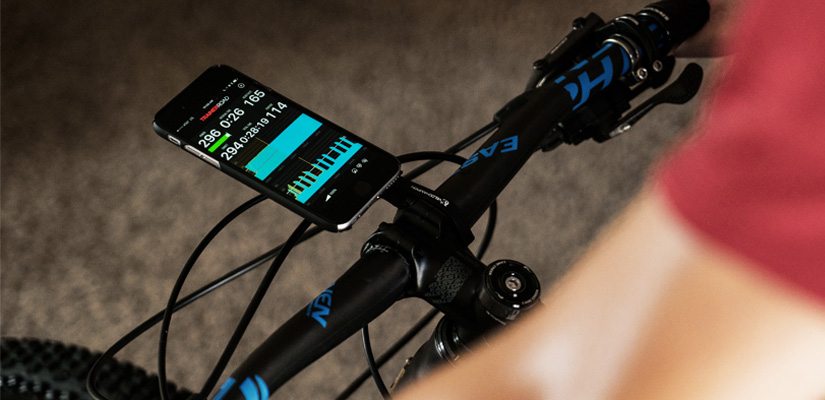How to Recover, Maintain and Build Fitness After Completing a Full Training Cycle

Too many dedicated athletes are hard-pressed to take some time off. Most of us even have a skewed view of vacation seeing it less as a break from reality and more as a training disruption. And while the human body is tremendously adaptive and capable of withstanding countless forms of abuse, properly administered rest is the key to a successful recovery, maintenance, and/or rebuild period after you’ve completed a full cycle of training.
FAQs
To Rest or Not to Rest
When you reach the end of a single season, especially when you come to the end of the year itself, a break is prudent. Sometimes it’s downright necessary. These are times to reflect on just how deep a hole you dug over the course of your most recent training and competition.
For the data-bestowed riders, digging into the data and paying keen attention to several things can prove very telling. The more historical data you have, the more informed your decision to rest or press on will be.
- Your overall training volume/TSS – A weekly 4-6% increase in overall volume is within a reasonably safe range, though this can be highly subjective. But whatever this rate is for you, it can’t continue to rise indefinitely.
- The intensity of your workouts/IF – Remember, not all TSS is created equal. Some workouts are very hard on the body, and some can be done daily.
- Comparative power outputs – Look at your FTP (or 5-minute or 30-second power, whatever’s relevant) during a similar training phase, time of year or season.
- Rate of recovery – Confirm that you’re rebounding from intense workouts in a time frame consistent with past training.
- Race performance – Objectively assess if you’re outperforming previous performances if/when you toe the line.
For those with little or no prior data on which to base this decision, you have to get more subjective and weigh things against less quantifiable measures.
- Training progress – Is your performance improving? Are you frequently nailing workouts or falling short?
- Mental perspective – Are you eager to train or are you just hanging in there?
- Outside stressors – Is your job unusually stressful? Are your relationships more energy-consuming than usual?
- Your body – Are your muscles sore often? Do you wake up in the morning reasonably refreshed?
- The toll of any racing – Practice races where you work on positioning are usually not as taxing as races where you attack, attack, attack.
As long as the cumulative load is allowing your body to favorably adapt, you’re on a good track. But be honest with yourself and stay mindful of all the components of effective training, both on and off the bike.
How Fast Will I Lose Fitness?
Should you decide to take some time off, your concerns shift to just how long you’ll rest and how much fitness you can expect to lose. The good news is that the deeper, more basic forms of fitness that take a while to establish also take a while to dissipate. Much like maximum strength built in the gym, aerobic base adaptations change very little inside of the first week or so.
But higher-level forms of fitness like sprint capacity fade much more quickly; so will the magnitude of your highly anaerobic bursts. To get a good sense of how long your fitness sticks around, consider Vladimir Issurin’s data on Training Residuals:
- Aerobic Endurance – Establishment: 25-35 days; Residuals: 25-35 days
- Anaerobic Power – Establishment: 14-22 days; Residuals 14-22 days
- Muscle Endurance/Threshold – Establishment: 10-20 days; Residuals: 10-20 days
- Sprint Power – Establishment: 2-8 days; Residuals: 2-8 days
Pretty easy to spot the trend, right? It lasts about as long as it takes to establish it. And some further information on all-important VO2max, Issurin reports that typical declines in aerobic capacity fall along these lines:
- 1-7 days: negligible decrease
- 10-14 days: 6% decrease
- 14-30 days: 12% decrease
- 30-63 days: 19% decrease
- >63 days: 26% decrease
Armed with this information, you can now take a breath. Bask in the realization that a missed workout or two won’t completely derail your training, neither will the holidays or a short vacation. But certain types of fitness will decline faster than others. So try not to plan a vacation a week prior to your highest-priority events, especially if you’re dependent on those more tenuous forms of fitness.
What’s the Minimum I Can Do to Stay Fast?
So now the question becomes, “How much work is necessary to stave off this decline?” Compared to the consistent work necessary to establish fitness, it takes surprisingly little work to simply hold steady. Thanks yet again to Dr. Issurin, we’re afforded a concise description of the amount of work necessary to maintain each type of fitness, and I’ll provide some descriptions of each type of workout. I’ll even suggest some example TrainerRoad workouts.
- Aerobic Endurance – Once every 2 weeks, do a long, low-intensity ride. Ride long enough that the fatigue comes as a product of the ride’s duration, not its intensity. Example: Laurentian
- Anaerobic Power – Once a week. Something along the lines of 30- to 60-second repeats upwards of 130% FTP should suffice. Example: Bird -1
- Muscle Endurance/Threshold – Once a week. Try a 2×20-minute Threshold or even Sweet Spot workout. Example: Eichorn
- Sprint Power – Once a week. Perform 4-6 all-out efforts somewhere between 20-30 seconds long. Example: Bays
We All Need to Rest
Like it or not, we can’t train hard and continue to improve year-round. But with some well-timed and thorough recovery, we can take the occasional break without suffering dire performance consequences. Treat this crucial component of the stress-adaptation cycle with the respect it deserves and you only stand to become a stronger, faster cyclist from season to season, year to year.
What Do I Do With Extra Time?
Some endurance athletes can shape an entire year around a single event; full-distance triathletes spring to mind. The majority of us, however, usually target several events and even multiple disciplines across a single calendar year.
Regardless of the number of events or seasons contained in a calendar year, all of us will probably come up against an awkward gap in training plans. Do you continue to train during these gaps? Do you rest and possibly lose some of your fitness? Do you pad existing training phases or just wing it by cherry picking workouts?
Supplementing the Base, Build, Specialty (BBS) Cycle
Whatever you decide, a bit of planning is a good idea. Even if your plan is to eschew anything resembling structured training, it’s helpful to have a clear picture of your intent. This allows you to let go of any self-imposed obligations and even tone down potential expectations of other folks in your life. So take a minute, decide what you’re after, then get to it.
Done properly, filling these end-of-season gaps can help a cyclist maintain and even build fitness outside of a typical TrainerRoad Base/Build/Specialty cycle. They can be used to target embark on a base-building block of low-intensity work, undergo another period of event-specific improvements, or take a break from all the structure and metrics and just ride your bike…or don’t.
Adjusting the BBS Cycle: Under 2 Weeks
In many instances, a BBS cycle will end and leave just a couple dangling weeks before the onset of your next multi-month training cycle. This is one of the best opportunities to bank some low-intensity mileage and not much else. Take a break from the intensity but maintain your current training schedule doing no work above 70% FTP.
Tone things down even further and ride nothing harder than 60% FTP if you really dug yourself in a hole. In this case, also consider spending the entirety of the first week off the bike. It’s far better to take some complete rest and return to training thoroughly reenergized and motivated than to shortchange your downtime and carry a bit of fatigue into your subsequent training.
Adjusting the BBS Cycle: 1-2 Month Gaps
Commonly, a rider’s end-of-year gap lasts a solid 1-2 months and sees riders shut things down just prior to the winter season. A gap of this duration is certainly long enough to lose substantial fitness if you halt training altogether. So it’s a good idea to allocate no more than a couple weeks to full rest and relaxation unless you’re okay with a measurable decline in capabilities.
This is an ideal time to fill the remaining 6-8 weeks with one of three options:
- Traditional Base training to take a break from the tough stuff and dedicate some attention to low-intensity aerobic base work.
- As many weeks of Build plan as your gap allows as long as you’re eager to train and confident that your level of training readiness is high.
- Some form of aerobic cross-training like cross-country skiing or snowshoeing if faced with snowy conditions; running, swimming, rowing, etc., for anyone in warmer climates.
Adjusting the BBS Cycle: Multi-Month Gaps
When presented with a longer-term gap lasting more than a couple months, it’s important to dedicate yourself to something closer to another BBS cycle.
- 3 months accommodates a full trip through either Traditional Base or Sweet Spot Base.
- 3 months can also be used to repeat 4 weeks of Sweet Spot Base I or II (make sure the final week is a recovery week) followed by a Build plan.
- 4 months offers enough time for a Build plan + a Specialty plan, but this could see a rider heading into the next BBS cycle in a too-fatigued state unless there’s a week or two of downtime tacked onto the end of your 4 months.
Keys to Filling Off-Season Gaps
Whatever your particular off-season time span, however you choose to fill that time, keep these things in mind:
- The off-season is not the time to build peak fitness, so err on the side of lighter workloads and keep the bigger picture in mind.
- Variety is the spice of life. Taking a break from riding your bike can be tremendously productive, both physically and mentally.
- Always allocate at least one week, preferably a couple, to low-intensity riding or no riding at all.
- Supplement every year (or even season) with an extended period of dedicated healing time.
For more answers to your cycling training questions, listen to our podcast Ask a Cycling Coach — the only podcast dedicated to making you a faster cyclist. New episodes are released weekly.
